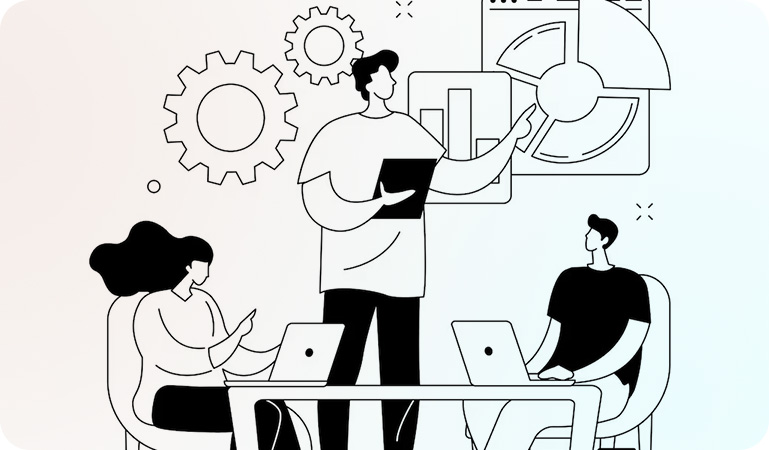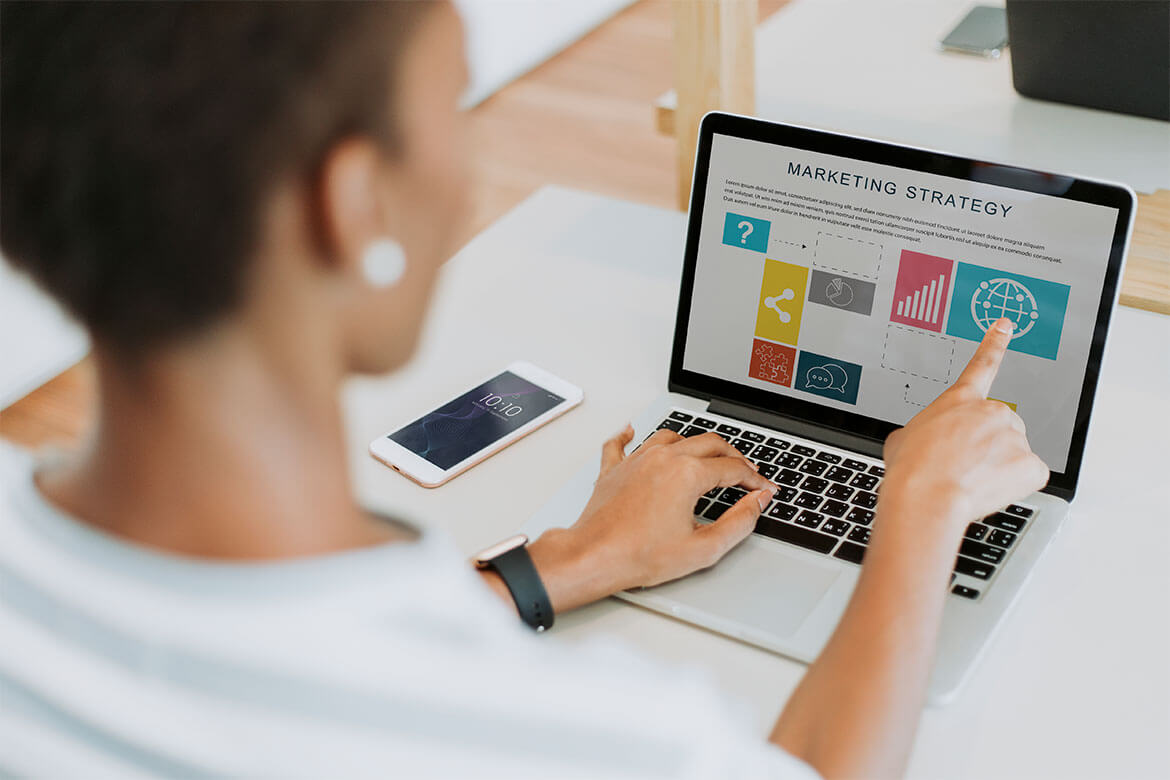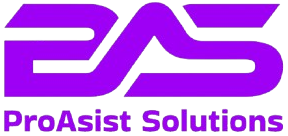How to Crack Frontend developer role
Decoding the Front-End: Your Guide to Cracking Front-End Developer Roles in India
The front-end is the face of the web, the user’s first impression, and the key to a seamless online experience. In India’s rapidly expanding tech landscape, front-end developers are in high demand. But securing that coveted role requires more than just knowing HTML, CSS, and JavaScript. This blog will equip you with the strategies and insights to ace your front-end developer interviews across India.
Understanding the Front-End Landscape in India
Front-end interviews in India often emphasize a strong foundation in core web technologies, problem-solving skills, and the ability to adapt to evolving frameworks and tools. Expect questions that assess your understanding of:
HTML, CSS, and JavaScript Fundamentals: A deep understanding of these core technologies is essential. Expect questions on semantic HTML, CSS layouts, responsive design, DOM manipulation, and JavaScript fundamentals.
Modern JavaScript Frameworks and Libraries: Proficiency in popular frameworks like React, Angular, or Vue.js is often required. Understanding their core concepts, component lifecycle, state management, and routing is crucial.
CSS Preprocessors and Methodologies: Familiarity with CSS preprocessors like Sass or Less and methodologies like BEM or CSS Modules is highly valued.
Responsive Design and Cross-Browser Compatibility: Understanding how to build websites that adapt to different screen sizes and work across various browsers is crucial.
Front-End Performance Optimization: Knowledge of techniques for improving website performance, such as code splitting, lazy loading, and image optimization, is essential.
Version Control (Git): Proficiency in Git for code management and collaboration is a must.
Testing and Debugging: Understanding of front-end testing frameworks (e.g., Jest, Mocha, Cypress) and debugging tools is important.
Accessibility (A11y): Knowledge of accessibility guidelines and best practices is increasingly important.
Web Performance (Lighthouse): Awareness of how to use tools like lighthouse to improve web performance is beneficial.
Strategies to Conquer Your Front-End Developer Interviews
Cracking these interviews requires a strategic blend of technical mastery, problem-solving skills, and effective communication. Here’s your roadmap:
- Master the Fundamentals:
HTML, CSS, and JavaScript: Go beyond basic syntax. Deep dive into semantic HTML, CSS layout techniques (Flexbox, Grid), and advanced JavaScript concepts (closures, promises, async/await).
Understand the DOM: Develop a strong understanding of the Document Object Model (DOM) and how JavaScript interacts with it.
Practice Responsive Design: Build websites that adapt to different screen sizes and devices. Understand media queries and responsive layout techniques.
- Embrace Modern Frameworks and Libraries:
Choose a Framework and Master It: Select a popular framework (React, Angular, or Vue.js) and become proficient in its core concepts. Understand its component lifecycle, state management, and routing.
Learn State Management: Understand different state management approaches (e.g., Redux, Context API, Vuex) and when to use them.
Explore Component Libraries: Familiarize yourself with popular component libraries (e.g., Material UI, Ant Design, Chakra UI) and understand how to use them effectively.
- Optimize for Performance and Accessibility:
Learn Performance Optimization Techniques: Understand how to improve website performance, such as code splitting, lazy loading, and image optimization.
Prioritize Accessibility: Learn about accessibility guidelines (WCAG) and how to build websites that are accessible to users with disabilities.
Use Web Performance Tools: Become familiar with tools like Lighthouse and PageSpeed Insights to analyze and improve website performance.
- Build a Strong Portfolio:
Create Personal Projects: Build a portfolio of projects that showcase your skills and experience.
Contribute to Open Source: Contributing to open-source front-end projects is a great way to learn from experienced developers and showcase your abilities.
Deploy Your Projects: Deploy your projects to platforms like GitHub Pages or Netlify to make them accessible online.
- Ace the Interview Rounds:
Coding Rounds: Be prepared to write clean, efficient, and well-documented code. Explain your thought process and the time/space complexity of your solution.
Technical Discussions: Be ready to discuss your past projects in detail, explaining the architecture, technologies used, challenges faced, and your contributions. Be honest about your strengths and weaknesses.
Live Coding Challenges: Be prepared for live coding challenges that require you to solve front-end problems in real-time.
Behavioral Interviews: Prepare using the STAR method to showcase your problem-solving skills, teamwork abilities, communication skills, and how you handle challenging situations.
- Tailor Your Approach:
Research the Company and Role: Understand the company’s domain, tech stack, and the specific requirements of the front-end developer role you’re applying for. Tailor your preparation to align with their needs.
Highlight Relevant Experience: Emphasize projects and experiences that directly relate to the technologies and challenges mentioned in the job description.
- Communicate Effectively:
Think Out Loud: During coding and design rounds, verbalize your thought process. Explain your reasoning and the decisions you’re making.
Ask Clarifying Questions: If you’re unsure about a requirement or a question, don’t hesitate to ask for clarification. This shows engagement and a desire to understand the problem fully.
Be Concise and Clear: Articulate your technical concepts and solutions in a clear and concise manner.
Final Thoughts
Cracking front-end developer roles in India requires a combination of strong technical skills, a problem-solving mindset, and the ability to communicate effectively. By focusing on the fundamentals, embracing relevant technologies, practicing diligently, and tailoring your approach, you can significantly increase your chances of landing your dream front-end development job. Stay curious, keep learning, and good luck on your interview journey!
How to creak Bridge Structural Engineer interview
Bridging the Gap: Your Guide to Cracking Bridge Structural Engineer Interviews in India
India’s infrastructure development is booming, and with it, the demand for skilled Bridge Structural Engineers is soaring. These engineers are the architects of vital connections, ensuring the safety and longevity of structures that facilitate transportation and progress. Landing a coveted role in this field requires more than just technical expertise; it demands a strategic approach to the interview process. This blog serves as your comprehensive guide to navigating and conquering Bridge Structural Engineer interviews across India.
Understanding the Landscape of Bridge Engineering Interviews in India
Bridge engineering interviews in India often delve deep into fundamental principles and practical applications, reflecting the critical nature of these structures. Expect questions that assess your understanding of:
- Structural Analysis: A strong foundation in structural analysis techniques, including methods of analysis for determinate and indeterminate structures, influence lines, and load distribution.
- Design Codes and Standards: Thorough knowledge of relevant Indian (IRC) and international (e.g., AASHTO) design codes and standards for bridges, including load combinations, material specifications, and design methodologies.
- Concrete and Steel Design: In-depth understanding of the design principles for reinforced concrete and steel bridges, including flexure, shear, torsion, axial loads, and connection design.
- Bridge Components and Behavior: Familiarity with various bridge components (superstructure, substructure, bearings, foundations, expansion joints) and their structural behavior under different loading conditions.
- Foundation Engineering: Understanding of different foundation types for bridges (shallow, deep), soil mechanics principles relevant to foundation design, and analysis of pile foundations and well foundations.
- Bridge Construction Methods: Knowledge of common bridge construction techniques, including precast and cast-in-situ methods, erection procedures, and construction management principles.
- Bridge Inspection and Maintenance: Awareness of bridge inspection procedures, common defects in bridges, and maintenance and rehabilitation techniques.
- Software Proficiency: Familiarity with structural analysis and design software commonly used in the industry (e.g., STAAD.Pro, SAP2000, MIDAS Civil).
Strategies to Engineer Your Interview Success
Cracking a Bridge Structural Engineer interview requires a blend of technical mastery, problem-solving skills, and the ability to articulate your knowledge effectively. Here’s your blueprint:
1. Solidify Your Fundamental Principles:
- Master Structural Analysis: Review your core concepts of statics, mechanics of materials, and structural analysis. Be prepared to analyze beams, trusses, frames, and arches under various loading conditions. Understand the principles behind different analysis methods.
- Deep Dive into Design Codes: Don’t just memorize code clauses; understand the underlying rationale and application of key IRC and relevant international codes. Be prepared to discuss load factors, material properties, and design philosophies.
- Reinforce Concrete and Steel Design: Revise the fundamental principles of reinforced concrete design (limit state design, working stress method) and steel design (plastic design, elastic design). Practice designing structural elements like beams, columns, slabs, and connections.
2. Understand Bridge-Specific Concepts:
- Study Different Bridge Types: Familiarize yourself with various bridge types (slab bridges, beam bridges, truss bridges, arch bridges, cable-stayed bridges, suspension bridges) and their suitability for different spans and site conditions. Understand their unique structural behavior.
- Analyze Bridge Components: Gain a thorough understanding of the function and design considerations for each bridge component, from the deck slab to the foundations.
- Grasp Foundation Engineering for Bridges: Review soil mechanics principles related to bearing capacity, settlement, and lateral earth pressure. Understand the design and analysis of different bridge foundation types.
3. Develop Practical Application Skills:
- Work Through Design Examples: Practice solving design problems for common bridge elements using relevant design codes. Focus on understanding the step-by-step process and the reasoning behind each design decision.
- Familiarize Yourself with Construction Methods: Understand the sequence of construction for different bridge types and the challenges associated with each method. Knowledge of prefabrication, launching, and erection techniques is valuable.
- Explore Case Studies: Study real-world bridge projects, including their design challenges, construction methodologies, and any lessons learned. This demonstrates a practical understanding of the field.
4. Hone Your Software Proficiency:
- Gain Hands-on Experience: If possible, gain practical experience using structural analysis and design software. Be prepared to discuss how you would model a bridge structure and interpret the analysis results.
- Understand Software Limitations: Be aware of the assumptions and limitations of different software and the importance of verifying results with fundamental calculations.
5. Prepare for Different Interview Rounds:
- Technical Interviews: Expect in-depth questions on the topics mentioned above. Be prepared to explain concepts clearly, derive basic formulas, and solve numerical problems.
- Design Exercises: You might be given a simplified design scenario and asked to outline your approach or perform basic calculations.
- Software Demonstrations: In some cases, you might be asked to demonstrate your proficiency in specific software.
- Behavioral Interviews: Prepare to discuss your problem-solving skills, teamwork abilities, communication skills, and how you handle challenging situations in a project environment. Use the STAR method to structure your answers.
6. Tailor Your Preparation:
- Research the Company and Role: Understand the company’s focus (e.g., design consultancy, construction firm, government agency), the types of bridge projects they handle, and the specific requirements of the role. Tailor your preparation accordingly.
- Review Their Project Portfolio: Familiarize yourself with the company’s past bridge projects. This shows your interest and allows you to ask informed questions.
7. Communicate Effectively:
- Think Out Loud: During problem-solving or design discussions, verbalize your thought process. Explain your reasoning and the assumptions you are making.
- Be Clear and Concise: Articulate your technical concepts and solutions in a clear and concise manner. Use appropriate terminology.
- Ask Clarifying Questions: If you are unsure about a question, don’t hesitate to ask for clarification. This shows your engagement and desire to understand the problem fully.
- Show Enthusiasm: Demonstrate your passion for bridge engineering and your eagerness to contribute to impactful infrastructure projects.
Bridging the Final Gap: Interview Day Strategies
- Dress Professionally: Present yourself in a professional manner.
- Arrive on Time: Punctuality shows respect for the interviewer’s time.
- Listen Carefully: Pay close attention to the questions asked.
- Be Confident: Project confidence in your knowledge and abilities.
- Ask Thoughtful Questions: Prepare a few insightful questions about the company, the team, or the projects you might be working on. This demonstrates your interest and initiative.
Conclusion
Cracking a Bridge Structural Engineer interview in India requires a strong foundation in structural principles, a deep understanding of design codes and bridge-specific concepts, and the ability to apply your knowledge practically. By diligently preparing, practicing your communication skills, and tailoring your approach to each interview, you can confidently bridge the gap between your aspirations and your dream career in shaping India’s infrastructure landscape. Good luck!
How to Crack backend developer role
Level Up Your Career: Your Guide to Cracking Backend Developer Roles in India
The digital backbone of every successful application lies in its backend. As a Backend Developer, you’re the architect, the builder, and the guardian of this critical infrastructure. With the booming tech industry in India, the demand for skilled backend developers is soaring. But landing your dream role requires more than just coding prowess. This blog will equip you with the strategies and insights to navigate the interview process and ace your backend developer applications across India.
Understanding the Backend Developer Landscape in India
Backend development in India is a dynamic field, constantly evolving with new technologies and paradigms. Interview expectations often reflect this, emphasizing a strong understanding of:
- Core Programming Languages: Proficiency in languages like Python, Java, Node.js, Go, Ruby, PHP, or C# is fundamental. Expect questions on syntax, data structures, algorithms, and language-specific features.
- Frameworks: Familiarity with popular backend frameworks relevant to your chosen language (e.g., Django, Flask, Spring Boot, Express.js, Ruby on Rails, Laravel, .NET) is crucial. Understanding their architecture, key components, and best practices is often tested.
- Databases: A solid grasp of relational databases (SQL, MySQL, PostgreSQL) and NoSQL databases (MongoDB, Cassandra, Redis) is essential. Expect questions on database design, querying, indexing, transactions, and scalability.
- API Design and Development: Building and consuming RESTful or GraphQL APIs is a core responsibility. Understanding API design principles, security, versioning, and documentation (e.g., Swagger) is vital.
- Server-Side Architecture: Concepts like microservices, monolithic architecture, serverless computing, and message queues (e.g., Kafka, RabbitMQ) are increasingly important, especially for mid-to-senior level roles.
- Cloud Technologies: Familiarity with cloud platforms like AWS, Azure, or GCP is a significant advantage. Understanding services related to compute, storage, databases, and deployment is often expected.
- DevOps Fundamentals: Basic knowledge of CI/CD pipelines, containerization (Docker, Kubernetes), and infrastructure as code (IaC) can set you apart.
- Security Best Practices: Understanding common web vulnerabilities (OWASP Top 10) and how to implement secure coding practices is paramount.
Strategies to Conquer Your Backend Developer Interviews
Cracking these interviews requires a strategic blend of technical mastery, problem-solving skills, and effective communication. Here’s your roadmap:
1. Deep Dive into Fundamentals:
- Master Your Chosen Language(s): Go beyond basic syntax. Understand memory management, concurrency models, design patterns, and advanced features of your preferred language(s). Practice writing clean, efficient, and well-documented code.
- Solidify Your Data Structures and Algorithms (DSA): This remains a cornerstone. Be comfortable implementing common data structures and algorithms, analyzing their time and space complexity, and applying them to solve backend-specific problems.
- Become a Database Guru: Understand different database types, their strengths and weaknesses, and when to use them. Practice writing complex SQL queries, designing efficient schemas, and understanding database performance optimization techniques. For NoSQL, grasp the different data models and their use cases.
2. Embrace Frameworks and Ecosystems:
- Choose Wisely and Go Deep: Focus on mastering one or two relevant frameworks thoroughly rather than having superficial knowledge of many. Understand their core principles, architectural patterns (e.g., MVC, MVVM), and best practices.
- Explore the Ecosystem: Familiarize yourself with related libraries, tools, and middleware within your chosen framework’s ecosystem. Understand how they integrate and solve common backend challenges.
3. Architect and Design with Confidence:
- Understand API Principles: Learn the principles of RESTful API design (HTTP methods, status codes, resource naming) and GraphQL. Be able to design well-structured and secure APIs.
- Grasp System Design Concepts: For mid-to-senior roles, system design is critical. Practice designing scalable and resilient backend systems, considering factors like load balancing, caching, data partitioning, and fault tolerance. Resources like “Grokking the System Design Interview” are invaluable.
- Think About Scalability and Performance: Understand techniques for optimizing backend performance, such as caching strategies, database indexing, and asynchronous processing.
4. Cloud and DevOps Awareness:
- Explore Cloud Platforms: Familiarize yourself with the services offered by at least one major cloud provider (AWS, Azure, GCP) relevant to backend development (e.g., compute instances, managed databases, serverless functions, storage solutions).
- Understand CI/CD: Learn the basics of Continuous Integration and Continuous Delivery pipelines and how they automate the software development lifecycle.
- Get Comfortable with Containerization: Docker and Kubernetes are increasingly prevalent. Understand how they work and their benefits for deploying and managing backend applications.
5. Prioritize Security:
- Learn the OWASP Top 10: Understand common web vulnerabilities like SQL injection, cross-site scripting (XSS), and authentication flaws.
- Implement Secure Coding Practices: Be aware of how to prevent these vulnerabilities in your code and design secure backend systems. Understand authentication and authorization mechanisms (e.g., JWT, OAuth).
6. Practice, Practice, Practice:
- Solve Backend-Focused Problems: Look for coding challenges and interview questions specifically related to backend development, such as API implementation, database querying, and basic system design scenarios. Platforms like HackerRank, LeetCode (focus on database and design problems), and specialized interview prep sites can be helpful.
- Build Personal Projects: Showcase your skills by building your own backend applications. This demonstrates practical experience and allows you to talk about real-world challenges and solutions during interviews.
- Contribute to Open Source: Contributing to open-source backend projects is a great way to learn from experienced developers and showcase your abilities.
7. Ace the Interview Rounds:
- Coding Rounds: Be prepared to write code that is not only correct but also clean, efficient, and well-documented. Explain your thought process and the time/space complexity of your solution.
- Technical Discussions: Be ready to discuss your past projects in detail, explaining the architecture, technologies used, challenges faced, and your contributions. Be honest about your strengths and weaknesses.
- System Design Rounds: Approach these rounds by clarifying requirements, discussing different architectural options and their trade-offs, and focusing on scalability, reliability, and performance.
- Behavioral Interviews: Prepare using the STAR method to showcase your problem-solving skills, teamwork abilities, communication skills, and how you handle challenging situations in a backend development context.
8. Tailor Your Approach:
- Research the Company and Role: Understand the company’s domain, tech stack, and the specific requirements of the backend developer role you’re applying for. Tailor your preparation to align with their needs.
- Highlight Relevant Experience: Emphasize projects and experiences that directly relate to the technologies and challenges mentioned in the job description.
9. Communicate Effectively:
- Think Out Loud: During coding and design rounds, verbalize your thought process. Explain your reasoning and the decisions you’re making.
- Ask Clarifying Questions: If you’re unsure about a requirement or a question, don’t hesitate to ask for clarification. This shows engagement and a desire to understand the problem fully.
- Be Concise and Clear: Articulate your technical concepts and solutions in a clear and concise manner.
Final Thoughts
Cracking backend developer roles in India requires a combination of strong technical skills, a problem-solving mindset, and the ability to communicate effectively. By focusing on the fundamentals, embracing relevant technologies, practicing diligently, and tailoring your approach, you can significantly increase your chances of landing your dream backend development job. Stay curious, keep learning, and good luck on your interview journey!
How to creak Technical Interview
Cracking Technical Interviews Across India: Your Comprehensive Guide
Landing a coveted tech job in India’s competitive landscape requires more than just technical prowess. It demands a strategic approach to technical interviews, tailored to the expectations and nuances prevalent across the country. This blog post serves as your comprehensive guide to navigating and conquering these interviews, equipping you with the knowledge and strategies to shine.
Understanding the Indian Tech Interview Landscape
Technical interviews in India often emphasize a strong foundation in computer science fundamentals, problem-solving abilities, and practical application of knowledge. While specific requirements vary between companies and roles, some common themes emerge:
- Focus on Fundamentals: Expect in-depth questions on data structures (arrays, linked lists, trees, graphs), algorithms (sorting, searching, dynamic programming), operating systems, database management systems (DBMS), and networking concepts.
- Coding Proficiency: You’ll likely be asked to write code in one or more popular programming languages like Python, Java, C++, or JavaScript. The emphasis is not just on getting the correct output but also on writing clean, efficient, and well-documented code.
- Problem-Solving Skills: Interviewers assess your ability to break down complex problems, think logically, and arrive at efficient solutions. They are interested in your thought process as much as the final answer.
- System Design (for senior roles): For more experienced candidates, system design rounds are common. These evaluate your ability to design scalable and robust systems, considering factors like performance, reliability, and cost.
- Behavioral Aspects: While the focus is technical, behavioral questions are also crucial. Companies want to understand your communication skills, teamwork abilities, problem-solving approach in real-world scenarios, and cultural fit.
Key Strategies to Ace Your Technical Interviews
Cracking technical interviews across India requires a multifaceted approach. Here’s a breakdown of essential strategies:
1. Master the Fundamentals:
- Data Structures and Algorithms (DSA): This is the bedrock of most technical interviews. Thoroughly understand common data structures and algorithms, their time and space complexities, and when to apply them. Practice solving a wide range of problems on platforms like LeetCode, GeeksforGeeks, and InterviewBit.
- Example: Be prepared to implement a linked list, explain the difference between various sorting algorithms (e.g., merge sort vs. quicksort), or solve a graph traversal problem.
- Programming Language Proficiency: Choose one or two languages relevant to the roles you’re targeting and develop a strong command of their syntax, core concepts, and standard libraries. Be ready to write code snippets and explain your logic clearly.
- Example: If applying for a Java developer role, be comfortable with concepts like object-oriented programming, inheritance, polymorphism, and exception handling.
- Operating Systems: Understand fundamental concepts like process management, memory management, concurrency, and file systems.
- DBMS: Be familiar with relational databases, SQL (writing queries, understanding joins), database design principles, and NoSQL concepts if relevant to the role.
- Networking: Grasp basic networking concepts like TCP/IP, HTTP, DNS, and network protocols.
2. Practice Problem-Solving Rigorously:
- Consistent Practice: Regularly solve coding problems of varying difficulty levels. Focus on understanding the underlying principles and techniques behind each solution.
- Think Out Loud: During practice and in the actual interview, verbalize your thought process. Explain your approach, the trade-offs you’re considering, and how you arrive at a solution. This allows the interviewer to understand your reasoning and provide guidance if needed.
- Explore Different Approaches: For each problem, try to think of multiple solutions and analyze their time and space complexities. This demonstrates a deeper understanding and problem-solving agility.
- Learn Problem-Solving Techniques: Familiarize yourself with common techniques like divide and conquer, greedy algorithms, backtracking, and dynamic programming.
3. Sharpen Your Communication Skills:
- Clarity and Conciseness: Articulate your ideas and solutions clearly and concisely. Use precise language to explain technical concepts.
- Active Listening: Pay close attention to the interviewer’s questions and prompts. If you’re unsure about something, don’t hesitate to ask clarifying questions.
- Visual Aids: If appropriate, use diagrams, flowcharts, or pseudocode to illustrate your solutions and make them easier to understand.
- Humility and Willingness to Learn: If you don’t know the answer to a question, it’s okay to admit it. Express your willingness to learn and how you would approach finding the solution.
4. Prepare for Different Interview Rounds:
- Coding Rounds: These might involve online assessments or live coding exercises. Practice typing code quickly and accurately without relying heavily on IDE auto-completion.
- Technical Discussions: Be prepared to discuss your past projects, the technologies you’ve worked with, and the challenges you faced. Highlight your contributions and the lessons you learned.
- System Design Rounds (for senior roles): Practice designing systems for scalability, reliability, and performance. Consider different architectural patterns and trade-offs. Resources like “Grokking the System Design Interview” can be helpful.
- Behavioral Interviews: Prepare for common behavioral questions using the STAR method (Situation, Task, Action, Result) to structure your answers. Think about examples that showcase your teamwork, problem-solving, leadership, and adaptability.
5. Tailor Your Preparation:
- Research the Company and Role: Understand the company’s domain, products, and the specific requirements of the role you’re applying for. Tailor your preparation to align with their tech stack and focus areas.
- Review the Job Description: Pay close attention to the keywords and skills mentioned in the job description and ensure you highlight relevant experience and knowledge during the interview.
6. Practice Mock Interviews:
- Simulate the Real Environment: Practice with friends, mentors, or online platforms that offer mock interviews. This helps you get comfortable with the interview format, time constraints, and pressure.
- Seek Feedback: Ask for constructive feedback on your technical skills, communication, and overall performance. Use this feedback to identify areas for improvement. Platforms like Pramp and Interview Kickstart can facilitate mock interviews.
7. Stay Calm and Confident:
- Manage Nervousness: It’s natural to be nervous, but try to stay calm and composed during the interview. Take deep breaths and focus on answering the questions to the best of your ability.
- Project Confidence: Even if you’re unsure about an answer, try to articulate your thought process confidently. A positive attitude and willingness to engage can leave a good impression.
Additional Tips for the Indian Context
- Be Prepared for Common Indian Interview Patterns: Some companies in India might have specific patterns or frequently asked questions. Researching company-specific interview experiences can be beneficial.
- Highlight Relevant Projects and Internships: Emphasize projects or internships where you’ve applied your technical skills to solve real-world problems.
- Showcase Your Passion for Technology: Demonstrate genuine interest in technology and a desire to learn and grow.
Conclusion
Cracking technical interviews in India is a challenging but achievable goal. By mastering the fundamentals, practicing problem-solving diligently, honing your communication skills, and tailoring your preparation, you can significantly increase your chances of success. Remember that each interview is a learning opportunity, so stay persistent, learn from your experiences, and approach each one with confidence. Good luck!
Why ProAsist Solutions
Building Inclusive Ecosystems: ProAsist Solutions’ Multifaceted Approach to Diversity & Growth for Corporate India
In today’s interconnected and rapidly evolving business landscape, corporate India is increasingly recognizing that diversity and inclusion are not just ethical imperatives, but strategic drivers of sustainable growth and innovation. At ProAsist Solutions, we’re committed to partnering with corporate India to champion diversity and inclusion as a primary agenda, while leveraging our diverse service portfolio to build inclusive ecosystems that foster growth and empower every individual.
The Corporate Imperative: Diversity & Inclusion as a Catalyst for Growth
For corporate India, embracing diversity and inclusion is no longer a “nice-to-have,” but a critical business imperative that drives innovation, enhances brand reputation, and expands market reach.
- Innovation & Creative Solutions: Diverse teams bring a wealth of perspectives, fostering creative problem-solving and driving innovation across all facets of business.
- Enhanced Decision-Making: Inclusive environments promote open dialogue and mitigate biases, leading to more informed and effective decision-making.
- Stronger Brand Reputation & Investor Confidence: Corporations that prioritize diversity and inclusion are seen as socially responsible, attracting top talent and investors.
- Increased Employee Engagement & Retention: Inclusive workplaces foster a sense of belonging, boosting morale, productivity, and retention.
- Expanded Market Reach & Customer Understanding: Diverse teams better reflect India’s diverse customer base, enabling corporations to better understand and cater to a broader market.
ProAsist Solutions: A Holistic Approach to Diversity & Growth
We understand that building a truly inclusive corporate culture requires a multi-faceted approach. ProAsist Solutions is uniquely positioned to partner with corporate India through our comprehensive service offerings:
- Diversity-Focused Staffing Services:
- We actively source and place diverse talent across all levels, ensuring representation from various backgrounds, abilities, and perspectives.
- We work with corporations to develop inclusive hiring strategies and eliminate unconscious bias in recruitment processes.
- Inclusive Training & Development Programs:
- We design and deliver customized training programs on diversity, inclusion, and cultural competency, fostering inclusive leadership and workplace environments.
- We provide skill development training tailored to diverse learning styles and needs.
- Accessible Mobile App & Web Design:
- We develop mobile apps and websites with accessibility in mind, ensuring they are user-friendly for individuals with diverse abilities.
- We incorporate inclusive design principles to cater to a broad range of user needs and preferences.
- Admin Activity Support:
- We provide admin support with the diversity lens, ensuring all processes are inclusive, and documents are accessible to all.
- We help create inclusive communication strategies, and ensure all communications are diversity aware.
- Engineering Tool Design with Accessibility:
- We design engineering tools with accessibility in mind, ensuring all professionals can use them.
- We focus on user-friendly interfaces, and inclusive design principles within the engineering tools.
Actionable Strategies for Corporate India:
- Conduct a Comprehensive Diversity & Inclusion Audit: Assess your current workforce, policies, and practices to identify areas for improvement.
- Develop a Strategic Diversity & Inclusion Plan: Define clear goals, objectives, and metrics for success, integrating them into all aspects of your business.
- Implement Inclusive Hiring & Promotion Practices: Eliminate bias from your talent acquisition and promotion processes, ensuring equal opportunities for all.
- Invest in Diversity & Inclusion Training: Educate your employees on unconscious bias, inclusive communication, and cultural competency.
- Foster a Culture of Psychological Safety: Create a workplace where employees feel safe to express their opinions and ideas without fear of reprisal.
- Establish Employee Resource Groups (ERGs): Support the formation of ERGs to provide support and advocacy for diverse employees.
- Leverage Technology for Accessibility: Ensure your digital platforms and tools are accessible to individuals with diverse abilities.
- Partner with Diversity-Focused Organizations: Collaborate with organizations that specialize in diversity and inclusion to enhance your efforts.
- Hold Leaders Accountable for Diversity & Inclusion: Integrate diversity and inclusion goals into performance evaluations and compensation structures.
Building a Future of Inclusive Growth:
At ProAsist Solutions, we believe that diversity and inclusion are not just about doing the right thing; they are about building a stronger, more resilient, and more innovative corporate India. By leveraging our diverse service portfolio, we can help you create inclusive ecosystems where every individual feels valued, respected, and empowered to contribute to collective success.
How is your corporation integrating diversity and inclusion across its various functions? Share your insights and best practices in the comments below!
The Team at ProAsist Solutions
How to Increase Your ROI Through scientific SEM?

Remember: even if the channel you’re considering is all the rage right now, it might not fit your brand. Always make informed decisions that directly relate to your company. Otherwise, your message won’t be delivered to its intended audience and you’ll have wasted time, effort and money.
Know Your Digital Goals
The first step is clearly identifying which goals you want to achieve. Get specific. Do you want to increase brand awareness? Are you all about locking in leads? Do you want to establish a strong network of influencers that can help you be discovered? How about pushing engagement on social media?

- Nulla aliquet convallis augue in placerat. In vulputate diam eu rutrum sagittis.
- Ut mollis varius ipsum. Proin aliquet interdum quam a dictum.
- Integer auctor orci et nibh consectetur, ut semper dolor sollicitudin.
- Quisque tincidunt id urna vel efficitur. Morbi tempor ligula ligula, eu vehicula ex vehicula quis.
Always Remember Your Goals!
Establishing a solid vision for your business is the first step to planning your digital marketing budget. Always keep your final goals in sight when organising anything for your company. When deciding which steps to take next in your business, ask yourself how they will help you achieve the goals you outlined in Step #1. This will ensure that you stay on track and prevent you from spending your budget on anything that won’t help you achieve.
"I understand myself more clearly now and have begun to make positive changes in my life. There was such a high level of customer service."
As your budget progresses and evolves, continue referring to your SMART objectives. Stay focused and remember your goals – they will always inform what your next step will be!
Furniture Company Appoints Retail Heavyweight
Want to know the one thing that every successful digital marketer does first to ensure they get the biggest return on their marketing budget? It’s simple: goal-setting. This is an absolutely essential practice for any digital marketer who knows how to execute their campaigns in a productive, cost-effective way. With a few. With a few simple tips, you can be doing the same in no time! In this blog, we’ll walk you through the first steps every savvy digital marketer takes to ensure that they’re on target to hit all their marketing objectives. Get ready for revenue!
Remember: even if the channel you’re considering is all the rage right now, it might not fit your brand. Always make informed decisions that directly relate to your company. Otherwise, your message won’t be delivered to its intended audience and you’ll have wasted time, effort and money.
Know Your Digital Goals
The first step is clearly identifying which goals you want to achieve. Get specific. Do you want to increase brand awareness? Are you all about locking in leads? Do you want to establish a strong network of influencers that can help you be discovered? How about pushing engagement on social media?


Get Specific
A useful tool for narrowing down your goals to ensure they’re viable is the SMART mnemonic. It’s important to get specific to understand exactly what you’re working towards, and help you break down the process of hitting your targets. This is exactly what this mnemonic helps you to achieve.
- Does the channel reach my intended audience?
- Is the channel sustainable and affordable within my company’s marketing budget?
- Will I be able to measure the success of the channel?
- Does the channel allow me to express my brand’s intended message?
- Do the channels I’m considering work together to convey my message?

Always Remember Your Goals!
Establishing a solid vision for your business is the first step to planning your digital marketing budget. Always keep your final goals in sight when organising anything for your company. When deciding which steps to take next in your business, ask yourself how they will help you achieve the goals you outlined in Step #1. This will ensure that you stay on track and prevent you from spending your budget on anything that won’t help you achieve.
Cum et essent similique. Inani propriae menandri sed in. Pericula expetendis has no,
quo populo forensibus contentiones et, nibh error in per.Denis Robinson
As your budget progresses and evolves, continue referring to your SMART objectives. Stay focused and remember your goals – they will always inform what your next step will be!
How to Increase Your ROI Through scientific SEM?
Want to know the one thing that every successful digital marketer does first to ensure they get the biggest return on their marketing budget? It’s simple: goal-setting. This is an absolutely essential practice for any digital marketer who knows how to execute their campaigns in a productive, cost-effective way. With a few. With a few simple tips, you can be doing the same in no time! In this blog, we’ll walk you through the first steps every savvy digital marketer takes to ensure that they’re on target to hit all their marketing objectives. Get ready for revenue!
Remember: even if the channel you’re considering is all the rage right now, it might not fit your brand. Always make informed decisions that directly relate to your company. Otherwise, your message won’t be delivered to its intended audience and you’ll have wasted time, effort and money.
Know Your Digital Goals
The first step is clearly identifying which goals you want to achieve. Get specific. Do you want to increase brand awareness? Are you all about locking in leads? Do you want to establish a strong network of influencers that can help you be discovered? How about pushing engagement on social media?


Get Specific
A useful tool for narrowing down your goals to ensure they’re viable is the SMART mnemonic. It’s important to get specific to understand exactly what you’re working towards, and help you break down the process of hitting your targets. This is exactly what this mnemonic helps you to achieve.
- Does the channel reach my intended audience?
- Is the channel sustainable and affordable within my company’s marketing budget?
- Will I be able to measure the success of the channel?
- Does the channel allow me to express my brand’s intended message?
- Do the channels I’m considering work together to convey my message?

Always Remember Your Goals!
Establishing a solid vision for your business is the first step to planning your digital marketing budget. Always keep your final goals in sight when organising anything for your company. When deciding which steps to take next in your business, ask yourself how they will help you achieve the goals you outlined in Step #1. This will ensure that you stay on track and prevent you from spending your budget on anything that won’t help you achieve.
Cum et essent similique. Inani propriae menandri sed in. Pericula expetendis has no,
quo populo forensibus contentiones et, nibh error in per.Denis Robinson
As your budget progresses and evolves, continue referring to your SMART objectives. Stay focused and remember your goals – they will always inform what your next step will be!

Compare Photo Views
Want to know the one thing that every successful digital marketer does first to ensure they get the biggest return on their marketing budget? It’s simple: goal-setting. This is an absolutely essential practice for any digital marketer who knows how to execute their campaigns in a productive, cost-effective way. With a few. With a few simple tips, you can be doing the same in no time! In this blog, we’ll walk you through the first steps every savvy digital marketer takes to ensure that they’re on target to hit all their marketing objectives. Get ready for revenue!
Remember: even if the channel you’re considering is all the rage right now, it might not fit your brand. Always make informed decisions that directly relate to your company. Otherwise, your message won’t be delivered to its intended audience and you’ll have wasted time, effort and money.
Know Your Digital Goals
The first step is clearly identifying which goals you want to achieve. Get specific. Do you want to increase brand awareness? Are you all about locking in leads? Do you want to establish a strong network of influencers that can help you be discovered? How about pushing engagement on social media?


Get Specific
A useful tool for narrowing down your goals to ensure they’re viable is the SMART mnemonic. It’s important to get specific to understand exactly what you’re working towards, and help you break down the process of hitting your targets. This is exactly what this mnemonic helps you to achieve.
- Does the channel reach my intended audience?
- Is the channel sustainable and affordable within my company’s marketing budget?
- Will I be able to measure the success of the channel?
- Does the channel allow me to express my brand’s intended message?
- Do the channels I’m considering work together to convey my message?

Always Remember Your Goals!
Establishing a solid vision for your business is the first step to planning your digital marketing budget. Always keep your final goals in sight when organising anything for your company. When deciding which steps to take next in your business, ask yourself how they will help you achieve the goals you outlined in Step #1. This will ensure that you stay on track and prevent you from spending your budget on anything that won’t help you achieve.
Cum et essent similique. Inani propriae menandri sed in. Pericula expetendis has no,
quo populo forensibus contentiones et, nibh error in per.Denis Robinson
As your budget progresses and evolves, continue referring to your SMART objectives. Stay focused and remember your goals – they will always inform what your next step will be!
![Untitled design (1)[1]](https://proasistsolutions.com/wp-content/uploads/2021/04/Untitled-design-11-e1744036396309.png)





